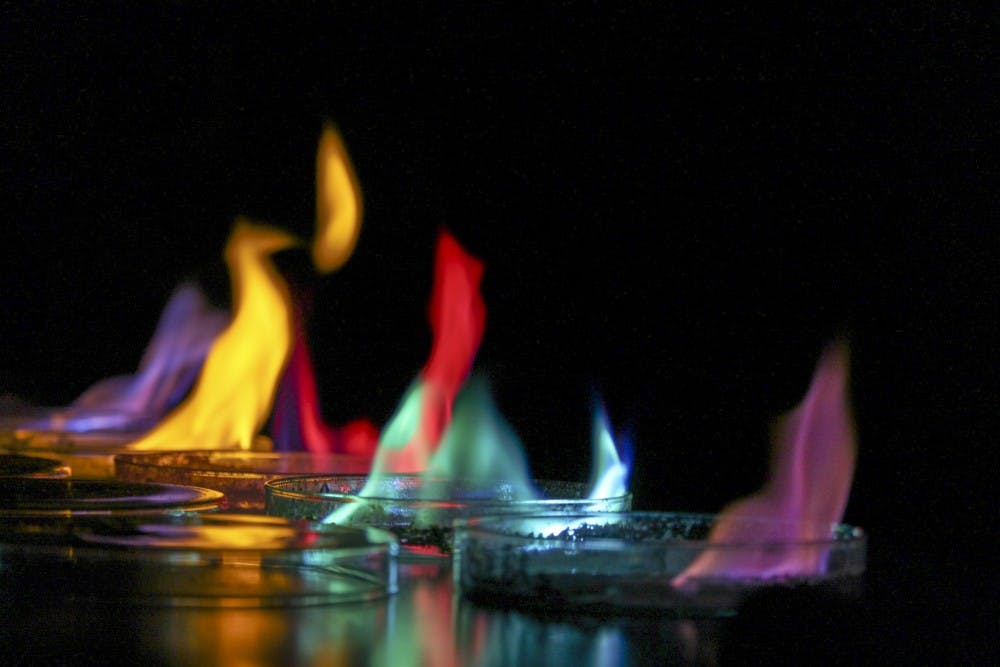By Liz Meuser
Science. Unless your college educational experience has been devoted to cramming for biology exams, chemistry labs or trying not to doze off in a physics lecture, most people’s scientific knowledge goes as far as watching Bill Nye the Science Guy videos.
INSIDE recently sat down with Jonathan Karty, Associate Scientist and Director of the Mass Spectrometry Facility in the chemistry department at IU, for a chemical demonstration on the various flame colors of elements. Karty conducted a standard Flame Test demonstration, igniting petri dishes of different element salts with alcohol to display their colorful flames.
“Think of it as a flambé at a restaurant,” Karty said. According to Karty, the element’s flame is a result of hot atoms cooling off by emitting light.
“When you heat elements up, they vaporize and get what we call excited,” Karty said. “They have to get rid of that heat somehow, and atoms can’t do it very easily, so they emit light.”
When the elements become white hot and begin to cool down, the energy levels of their electrons correspond with very specific colors.
The main purpose of such a technique is to analyze and detect the presence of metal ions, a function that is prevalent to many fields of research.
Here are a few areas where the evaluation of colored flames is applicable to everyday life:
What’s in your water?
Water companies test water resources for poisonous metals using a process similar to a flame test known as “Flame Emission.”
“They’ll take some water, spray it into a hot gas flame and record the spectrum being given off,” Karty said “And each metal, lead, mercury, cadmium, the things you don’t want in your water will give off a unique color.”
Water treatment companies do this regularly to make sure drinking water sources are safe.
Written in the stars
“This concept of visual spectroscopy allows astronomers to identify the elements in stars and on planets,” said Karty.
With the help of visible flames, astronomers are able to determine what metals are in a star’s atmosphere based upon the colors they see in its spectrum.
Ignite the light
The same idea goes for popular light spectacles such as sparklers and fireworks, where the light emitted from heated atoms create an array of colorful flames.
“In a firework, you’ll have gunpowder burning white hot, and they’ll put these salts into it to get the various colors that you see,” said Karty.
Elements: Here are some of the elements burned in the demonstration
Copper:
dark bluish-green. (This is also Karty’s personal favorite flame color.)
Strontium:
bright red
Sodium:
intense yellow
Potassium:
soft lilac
Lithium:
vibrant fuchsia red known as “Carmine.”
Note:
The theme of this year’s National Chemistry Week, beginning Oct. 18, is also color. Each science department will put on shows and conduct tours for the community.





